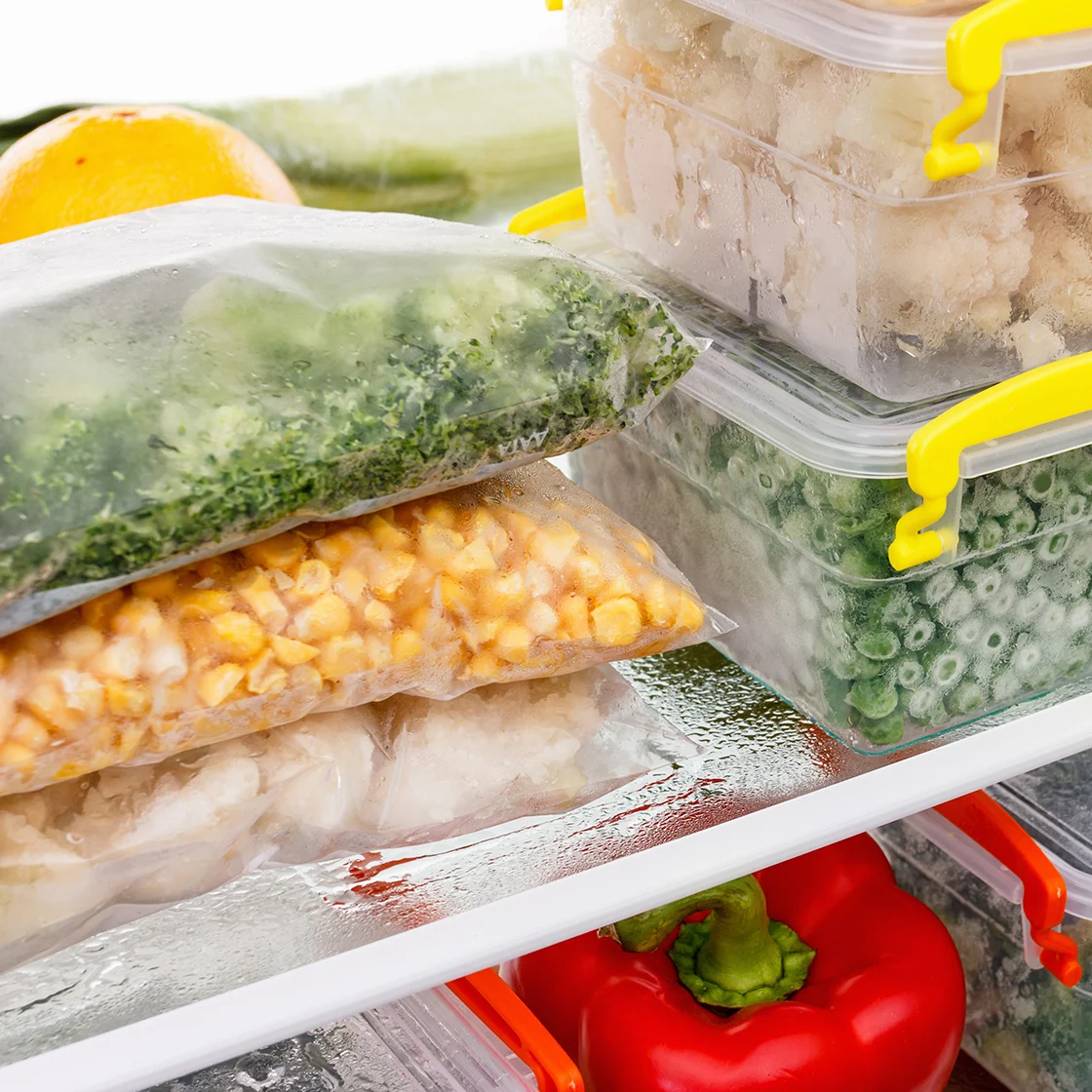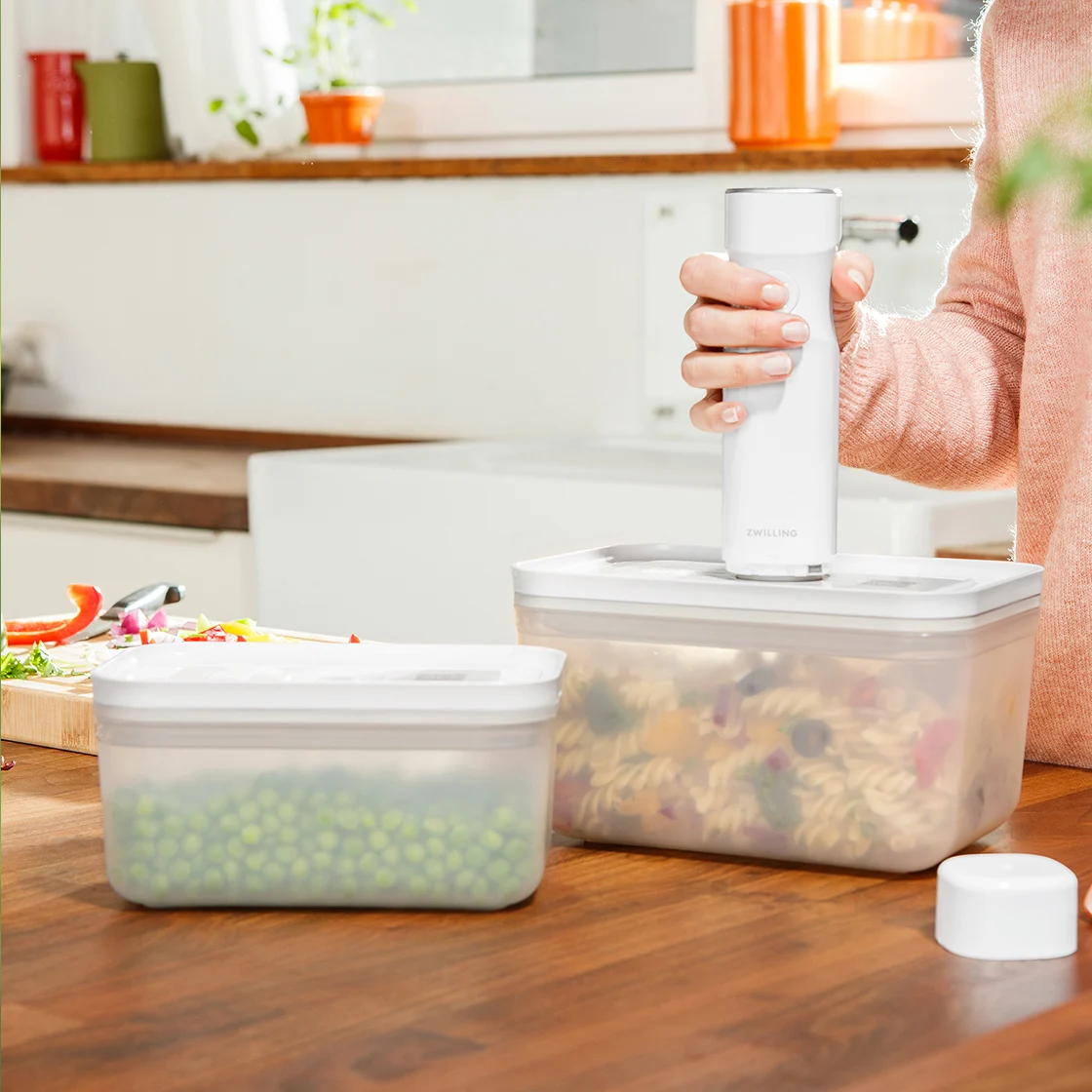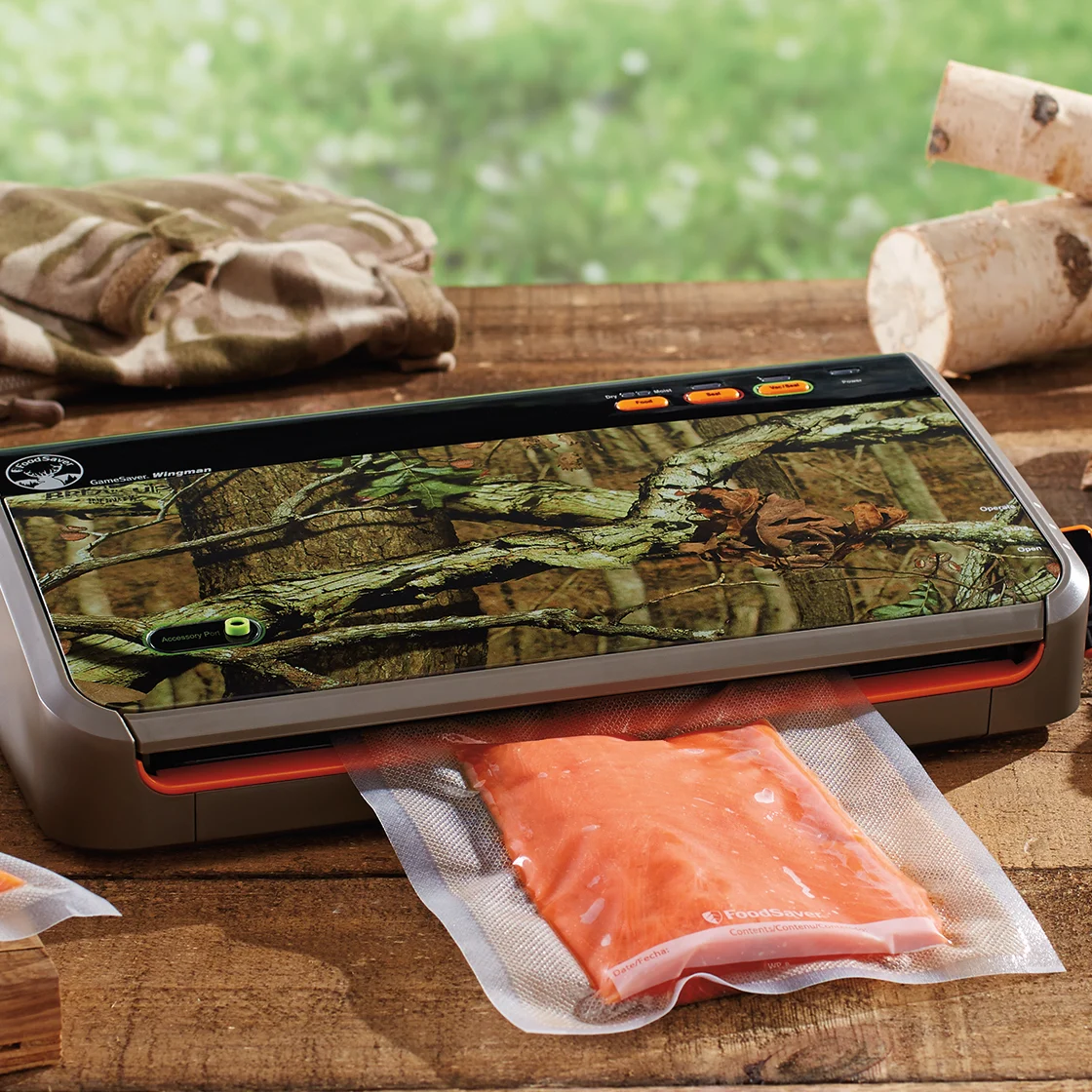Here’s How to Keep Food Fresh

Fresh meat and fresh produce are high in both nutrients and flavour but keeping them at their best can be a challenge. The three main factors that affect freshness are temperature, airflow, and humidity. The right food storage supplies and a few simple strategies will help keep your fresh food tasting great and lasting longer.
Keeping Food Fresh in Your Fridge
Most meat and produce will stay fresh longer if sealed in freezer bags, food storage containers, or some type of fridge or freezer wrap. These airtight vessels all do a great job of holding in moisture and preventing dehydration.
Freezer Bags
Freezer bags are designed for use in your freezer but are also ideal for your fridge. Thicker than regular plastic bags, they can stand up to constant shuffling in your fridge. They’re also less brittle when frozen, so less prone to puncture or tearing in your freezer. You can reuse freezer bags several times until they wear out, but you can also find environmentally-friendly reusable freezer bags that will last much longer. Here’s a few more freezer bag tips:
You can easily extract the air before freezing by rolling the bag from the base toward the seal or pressing it against your body
Once sealed you can lay freezer bags flat and stack them up to economize space
Zip-top freezer bags are great for solid foods, but the zippered seals can gum up when sealing liquids
Slider-top freezer bags are ideal for sealing sauces, soups and other liquids


Food Storage Containers
One big advantage of airtight food containers is organization. Sure, you can pile freezer bags on top of each other, but food containers are specifically designed for neat and orderly stacking. You can also label your containers, which makes them easier to identify than labels on freezer bags to see what’s inside. Safety tip: if using storage containers in your freezer, always leave adequate headspace for liquids to expand as they freeze, especially when using glass containers that can shatter. Other benefits of food storage containers are:
Easier to fill with liquids, stews, or soups
Feature durable tempered-glass that won’t pick up stains or smells
Can be oven- freezer- and dishwasher-safe
Include locking lids to prevent leaks
Fridge & Freezer Wraps
Bags and containers don't work as well for large or irregularly-shaped items like cuts of meat. Butcher paper works well for short term storage in your fridge. Freezer paper or freezer-grade plastic wrap are ideal for your freezer, and a final wrap of aluminum foil will offer even more protection. You should also rewrap any pre-wrapped fresh meat you get from the grocery store. This type of short-term packaging is not designed to withstand sub-zero temperatures.
Vacuum Sealers
A vacuum sealer works by removing the air from the space around your food. It then employs a heated seal bar to fuse the sides of the bag together. This prevents exposure to air which can spoil the food or allow it to go stale over time. The net result is to keep food fresh in your fridge up to five times longer than non-vacuum storage methods. Removing the air from your food will also help prevent freezer burn. Some vacuum sealers also come with an accessory port and hose to seal up food storage containers. Here’s some other features to look for:
Extra-wide sealing strip for a more secure seal
Dishwasher-safe removable drip tray
Built in roll holder and cutter
Moist and dry settings
Included vacuum sealer bags, rolls and zipper bags

Vacuum Sealing Containers
You can also find vacuum sealing containers. It’s a space-saving alternative that combines the power of a countertop sealer with the compact, versatility of a handheld vacuum pump. Available in both glass and BPA-free plastic, you simply attach the pump to the top of the food storage container to remove the air. Some containers also feature a QR code on the lid and downloadable free app. This lets you know how long the food can be kept, and sends you a reminder when the food needs to be consumed.
Crisper Drawers
Different types of produce need more or less humidity to stay fresh, so your crisper drawers typically have low-humidity and high-humidity settings. This is important to know because certain fruits emit large amounts of ethylene gas. It’s a natural part of the ripening process but it also hastens the decay and rotting of not just the fruit, but of other produce around them (especially leafy greens). Here’s a handy guide to follow:
Produce for Low Humidity Drawers
Apples
Pears
Stone fruits (apricots, nectarines, peaches, plums)
Tropical fruits (mangoes, kiwis, papayas, figs, melon)
Any produce not sensitive to moisture loss
Produce for High Humidity Drawers
Leafy greens (lettuce, spinach, chard, watercress, kale)
Asparagus, broccoli, cabbage, cauliflower, green beans
Carrots, cucumber, peppers
Fresh Herbs
Berries
Any produce sensitive to ethylene gas or moisture loss
Fridge vs. Room Temperature Storage
Debate continues about which types of produce are best stored at room temperature in your pantry or on your counter. Some produce can also benefit from room temperature ripening before cold storage. Here’s a generally agreed upon breakdown:
Produce to Store at Room Temperature
Onions
Eggplant
Potatoes
Pumpkins
Sweet potatoes
Tomatoes
Garlic
Ginger
Basil (in water)
Produce to Ripen at Room Temperature then Store in the Fridge
Apricots
Avocados
Cantaloupe
Kiwi
Mangoes
Nectarines
Papayas
Peaches
Pears
Plums

Fresh Food Shopping Tips
Whether it’s fresh meat, fruits or vegetables, the time since harvesting will affect how long they stay fresh in your fridge:
Look for meat that has a deep, rich, red colour which indicates freshness
Avoid meat that appears grey or dull around the edges
Choose the freshest fruits and veggies to ensure the longest storage life
Look for vibrant-coloured leafy greens without any limp or yellowing leaves
Look for root vegetables that seem heavy for their size without blemishes or soft spots
Keeping Food Fresh in Your Freezer
Freezing is also a great way to keep food fresh. It prevents microorganisms from growing and has very little effect on the nutrient content. Freezing also takes less effort than canning or fermenting and doesn’t require specialized equipment. In addition to leftovers and pre-made meals, freezing works well for meat, berries, and blanched vegetables. If you need more space you can always add a chest freezer to your basement or garage.
Keeping your food fresh ensures it tastes better and lasts longer. It also promotes good food safety. Inevitably some food will go bad. If something looks or smells off trust your instincts and adhere to the food safety adage—when in doubt, throw it out.